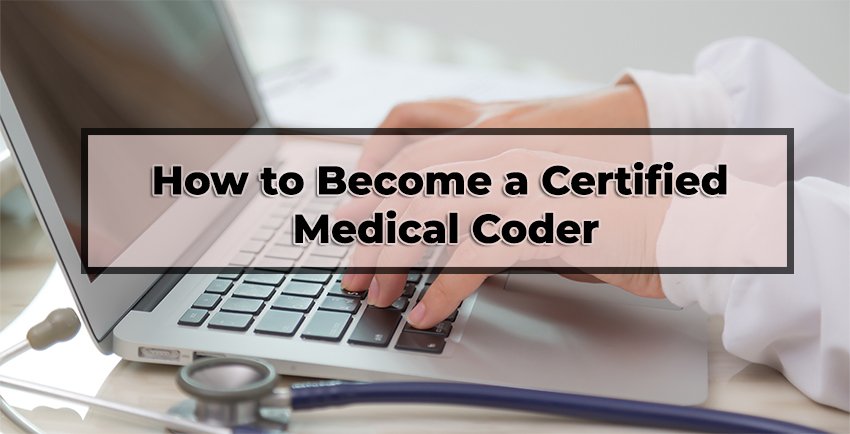How to Become a Certified Medical Coder
Medical coding is a rapidly growing profession that plays a critical role in the healthcare industry. Certified medical coders are essential in translating medical diagnoses, procedures, and services into standardized codes, which are used for billing and insurance purposes. Becoming a certified medical coder offers stability, high demand, and numerous career growth opportunities. Below, we will explore in detail the steps involved in becoming a certified medical coder, the qualifications required, the types of certifications available, and tips for success in this field.

Step 1: Understand the Role of a Medical Coder
Before you embark on the journey to becoming a certified medical coder, it's essential to understand the core responsibilities of the profession. Medical coders work behind the scenes in healthcare facilities, turning complex medical reports into standardized codes. These codes are then used for healthcare documentation, billing, insurance claims, and statistical analysis. Some of the primary duties of a medical coder include:
- Reviewing patient records and medical histories.
- Applying the correct codes for diagnoses, treatments, and medical procedures.
- Ensuring accuracy in medical coding for billing and regulatory compliance.
- Staying updated on changes in medical coding standards (ICD, CPT, HCPCS).
Step 2: Obtain a High School Diploma or Equivalent
The first educational requirement for becoming a certified medical coder is to have a high school diploma or equivalent (GED). While this may seem basic, it lays the foundation for more advanced education in medical coding. Strong skills in science, biology, and English are beneficial as they help in understanding medical terminology and communication.
Step 3: Pursue Formal Education in Medical Coding
While some entry-level medical coding positions may not require formal education, most employers prefer candidates with specialized training in medical coding. You can enroll in a variety of educational programs, ranging from certificate programs to associate’s degrees. These programs will provide you with comprehensive knowledge of medical terminology, anatomy, coding systems, and healthcare regulations.
Certificate Programs
Certificate programs are a fast track to entering the medical coding profession. These programs typically last between six months to a year and focus specifically on the skills and knowledge required for medical coding. Students learn about medical coding systems such as ICD-10, CPT, and HCPCS, as well as healthcare reimbursement processes. Certificate programs are an ideal choice for individuals who are looking to enter the workforce quickly.
Associate’s Degree Programs
An associate's degree in health information management or medical coding can provide a more in-depth education. These programs typically take two years to complete and cover broader healthcare topics such as medical billing, health information management, and healthcare laws. An associate’s degree may increase your earning potential and open up additional career opportunities in healthcare administration.
Step 4: Learn Medical Coding Systems and Guidelines
A key component of becoming a successful medical coder is mastering the various coding systems used in the healthcare industry. The most common coding systems include:
- ICD (International Classification of Diseases): This system is used to classify diseases and health conditions. The current version in use is ICD-10, which includes codes for both diagnoses and inpatient hospital procedures.
- CPT (Current Procedural Terminology): This coding system is used for reporting medical procedures and services provided by healthcare professionals. CPT codes are widely used in outpatient and physician billing.
- HCPCS (Healthcare Common Procedure Coding System): This system is used to identify services, supplies, and products not covered by CPT codes, such as durable medical equipment.
Step 5: Gain Practical Experience
While formal education provides the necessary theoretical knowledge, gaining practical experience is essential for becoming a competent medical coder. Many educational programs include internships or externships that allow students to work in real-world healthcare environments. This hands-on experience is invaluable, as it helps you apply what you've learned in a clinical setting.
Internships/Externships
Many training programs offer opportunities to work in hospitals, clinics, or insurance companies under the supervision of experienced coders.
Entry-Level Positions
You can start in an entry-level position, such as a medical records clerk, to get familiar with healthcare documentation and medical coding.
Step 6: Choose a Medical Coding Certification
Becoming certified as a medical coder significantly boosts your employability and career prospects. There are several professional certifications available from organizations like the American Academy of Professional Coders (AAPC) and the American Health Information Management Association (AHIMA). Each certification has its own requirements and focus areas, so it’s important to choose the one that aligns with your career goals.
Certified Professional Coder (CPC)
The CPC is one of the most widely recognized certifications in the medical coding field, offered by the AAPC. It focuses on outpatient coding and is ideal for those working in physician’s offices, clinics, and ambulatory care centers. The CPC certification exam tests knowledge of medical coding guidelines, procedures, and diagnoses, as well as coding systems such as ICD-10, CPT, and HCPCS.
Certified Coding Specialist (CCS)
The CCS certification is offered by AHIMA and is geared toward coders who work in hospitals and inpatient settings. CCS-certified coders focus on more complex coding situations, such as inpatient records and extensive medical procedures.
Certified Inpatient Coder (CIC)
The CIC certification, also offered by AAPC, is specific to coders who work in inpatient settings. This certification emphasizes inpatient hospital coding, with a focus on ICD-10-CM and ICD-10-PCS codes.
Step 7: Prepare for and Pass the Certification Exam
Once you’ve chosen the certification that best suits your career goals, you will need to prepare thoroughly for the certification exam. Each certification has its own exam that tests your knowledge of medical coding systems, guidelines, and real-world coding scenarios. Preparation for the exam typically involves:
- Reviewing Study Guides and Textbooks
- Taking a Prep Course
- Practice Exams
Step 8: Maintain Certification and Continue Education
Once you’ve passed the certification exam and become a certified medical coder, it’s important to maintain your certification through continuing education. Healthcare regulations, coding guidelines, and billing requirements are constantly evolving, and keeping your knowledge up to date is essential for career success. Certification renewal typically requires earning continuing education units (CEUs) through workshops, courses, or professional development activities.
Step 9: Explore Career Opportunities
After becoming certified, you’ll be ready to apply for medical coding positions in a variety of healthcare settings. Medical coders are in demand in:
- Hospitals
- Physician’s offices
- Outpatient clinics
- Insurance companies
- Long-term care facilities
- Home healthcare services
Step 10: Advance Your Career in Medical Coding
As you gain experience, you may want to advance your career by pursuing additional certifications or leadership roles within the healthcare industry. For example, you can move into roles such as medical coding manager, healthcare compliance officer, or health information manager.
Additional Certifications
You may also consider pursuing additional certifications to enhance your qualifications:
- Certified Professional Coder-Instructor (CPC-I): For those interested in teaching medical coding.
- Certified Outpatient Coder (COC): Specializes in outpatient hospital coding.
- Certified Professional Biller (CPB): Focuses on the billing side of healthcare.
Becoming a certified medical coder involves education, certification, and a commitment to staying updated in a constantly changing healthcare landscape. The role offers a rewarding career with opportunities for growth, stability, and good earning potential. By following these steps, you can build a successful career in medical coding and contribute to the healthcare industry’s efficiency and accuracy.

